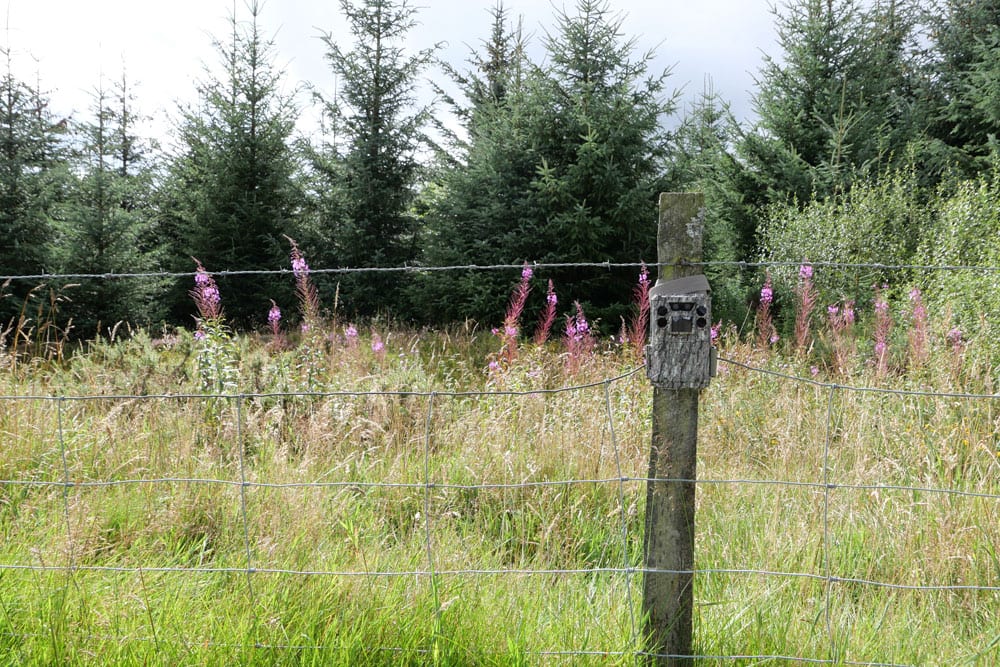By Beth Smith, Canid Howl Project
This is a guest post from new NatureSpy partners at the Canid Howl Project. NatureSpy is loaning the project 6 trail cameras to help monitor the wolves – hopefully allowing the researchers some additional insights and cool footage!
The Canid Howl Project team are thrilled to be partnering with NatureSpy for our upcoming fieldwork in December. As you may have guessed, the Canid Howl Project is all about studying the vocalisations of members of the Canidae family, although we mainly study wolves, coyotes and dogs. Wolves are a wide-ranging species that are pretty difficult to keep track of in the wild without the use of intrusive measures like fitting them with GPS collars.
Not only are these procedures expensive, but trapping and tranquillising animals can be quite stressful for them. Therefore, our current goal is to demonstrate that wolves can be tracked with a new, non-intrusive method: using their howls to identify their presence, a process known as passive acoustic localisation.
Just like how mobile phones can be located from the signal registering at several cell towers, wolves can be located when their howls are recorded on several microphones. By deploying passive acoustic recording devices (SM3s and SM4s for those of you in the bioacoustics field) at strategic points, we can use the difference in the time of arrival of wolf howls at each device to triangulate the position of the howling wolf (Kershenbaum, Owens & Waller, 2019).

The time of the howl at each device will be slightly different depending on how far away the wolves are – the further away, the longer it will take the sound to reach them, and from those tiny differences in times, we’ll be able to determine where the howling wolf was. We have already developed and demonstrated that this system works in Yellowstone National Park, and you can read the results of this project in our recently published paper.
Wolves and humans have a long and complex history, but now wolves are beginning to return to historic areas and coming closer and closer to where humans live. We are now working on how humans can live with these large predators. Having demonstrated the proof of concept, we now want to test the system in an environment where the wolves come into conflict with humans. Thanks to generous funding from the Animal Welfare Institute, we will be heading out to central Wisconsin, USA this December (2019) to continue our fieldwork trials.

Our aim is to show that a network of passive acoustic monitoring devices can detect and track the movement of wolves, and predict the time and location of potential conflict incidents. If we can forewarn humans of possible conflict, we can hope to avoid it. An early detection of wolves would allow farmers to redistribute resources, including livestock guarding dogs and prey animals, to avoid the conflict.
This would benefit both the farmers, who wouldn’t lose valuable livestock, and the wolves, who wouldn’t be hunted as heavily. We will also be investigating any vocal interactions between local farm dogs and wolves. For example, I’ll personally be looking to answer questions such as ‘Who howled first: the wolf or the dog?’.
But what does this have to do with camera traps? Well, the site we’re heading to is home to three wolf packs with relatively small home ranges compared to those in Yellowstone NP, and these packs are well-studied and tracked by local wildlife biologists. This means we have a good chance of finding rendezvous points – places where wolves come together to socialise and howl – where we can then set up camera traps.

Wolves are shy of humans and usually really hard to observe in the wild, but camera traps can allow us to film their interactions without disturbing their natural behaviour. Gathering footage of wolves howling at these rendezvous points would provide an amazing insight into the behaviour of these animals during howling bouts. We’re very grateful to NatureSpy for partnering with us on this and we look forward to sharing the footage with our followers!
To keep up to date with our adventures and project findings, follow us on social media:
You can also contact us via email: [email protected]